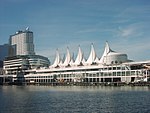Maple Leaf Publishing
Maple Leaf Publishing was a World War II-era Canadian comic book publisher active during the Golden Age of Comic Books. They were one of four publishers—along with Anglo-American Publishing, Hillborough Studios, and Bell Features—which published "Canadian Whites"—black-and-white comic books with colour covers that proliferated during the war years when American imports were restricted. Maple Leaf Publishing started publishing comic books in March 1941 and went out of business in late 1946. In contrast to the larger Anglo-American, which published many comics drawn by Canadians but based on imported American scripts, Maple Leaf focused on home-grown scripts. Maple Leaf's first publication, Better Comics #1, is thus considered to be the first true Canadian comic book.Maple Leaf's comics were modeled on the American format, minus the colour interiors. Notable titles other than Better Comics included Big Bang Comics, Lucky Comics and Rocket Comics.
Excerpt from the Wikipedia article Maple Leaf Publishing (License: CC BY-SA 3.0, Authors).Maple Leaf Publishing
Vancouver
Geographical coordinates (GPS) Address Nearby Places Show on map
Geographical coordinates (GPS)
| Latitude | Longitude |
|---|---|
| N 49.3 ° | E -123.1 ° |
Address
Vancouver
Vancouver
British Columbia, Canada
Open on Google Maps







